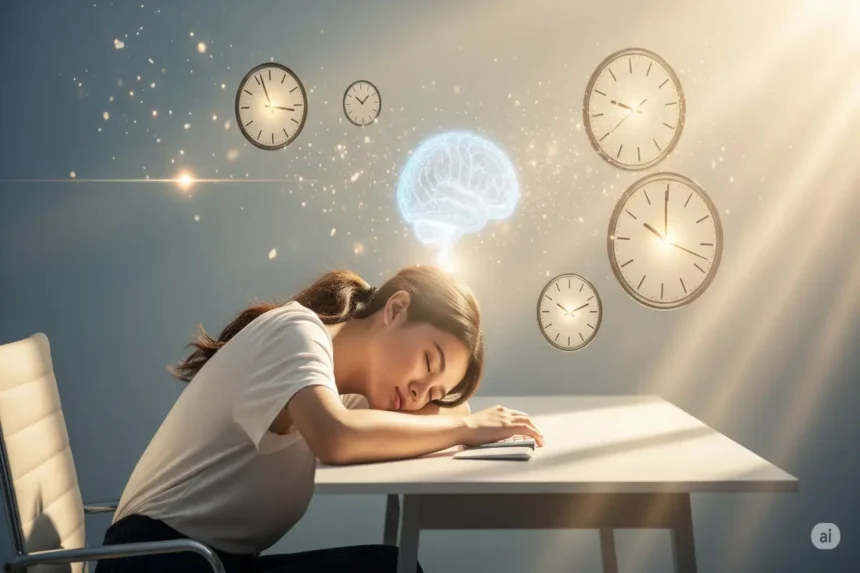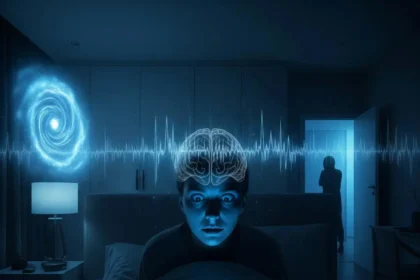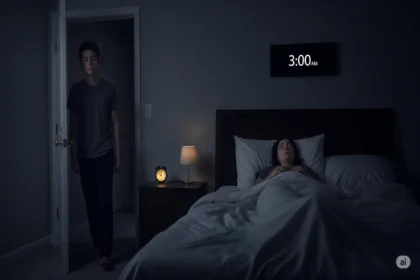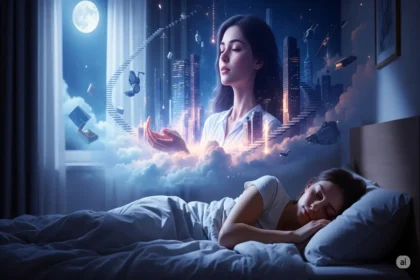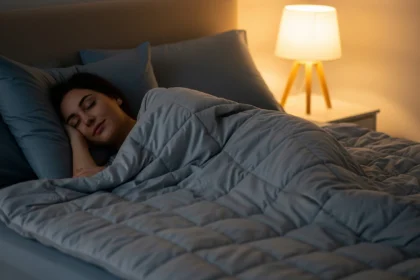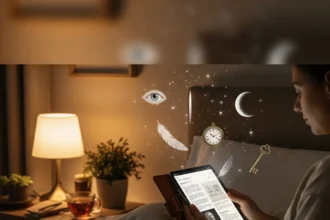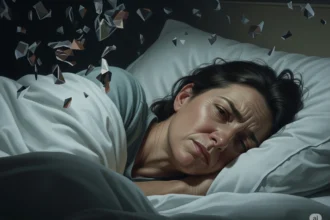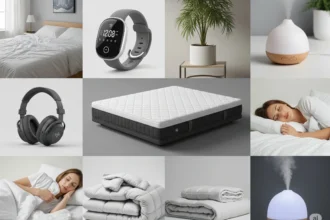The Science of Naps is far more profound than a simple indulgence; it’s a sophisticated biological strategy that, when leveraged correctly, can dramatically enhance our daily lives. We’ve all felt it: that insidious dip in energy after lunch, a gravitational pull towards the nearest soft surface, a mental fog descending just when clarity is most needed. For too long, this midday fatigue has been battled with caffeine, willpower, or the sheer force of habit. Yet, a growing body of scientific evidence suggests that instead of fighting this natural urge, we should embrace it, recognizing the humble nap not as a sign of weakness, but as a powerful tool for cognitive rejuvenation, emotional resilience, and even physical health.
Imagine Sarah, a busy graphic designer, staring blankly at her screen, a creative block stifling her progress on a crucial project. Her usual response would be another coffee. But today, remembering an article she’d read, she decides to try something different. She sets an alarm for 20 minutes, finds a quiet corner, and closes her eyes. When the gentle buzz signals her return, she feels a subtle but distinct shift. The mental fuzziness has lifted, and suddenly, the design solution she’d been searching for appears almost effortlessly. Sarah’s experience isn’t just anecdotal; it’s a testament to the immediate, tangible benefits that science is increasingly validating.
Understanding the Sleep Symphony
To truly grasp the transformative power of a nap, we must first journey into the intricate landscape of sleep itself. Our nightly rest is not a uniform state of unconsciousness, but a meticulously choreographed dance of distinct stages, broadly categorized into Non-Rapid Eye Movement (NREM) sleep and Rapid Eye Movement (REM) sleep. NREM sleep unfolds in three progressive stages: N1, the lightest stage, where you might feel yourself drifting off; N2, a slightly deeper phase characterized by a slowing heart rate and a drop in body temperature; and N3, often referred to as slow-wave sleep, the most profoundly restorative stage, crucial for physical repair and deep memory consolidation. REM sleep, on the other hand, is a vibrant, active state, marked by rapid eye movements, vivid dreaming, and brain activity remarkably similar to wakefulness. Each of these stages contributes uniquely to our overall well-being, from cellular repair to emotional processing.
When we talk about napping, we are essentially discussing a condensed version of this nocturnal symphony. The duration of your nap becomes the conductor, determining which instruments—which sleep stages—get to play, and consequently, which specific benefits you unlock. This is where the strategic art of napping truly begins.
The Strategic Nap: Duration Dictates Benefit
The beauty of napping lies in its versatility. Different durations offer distinct advantages, tailored to specific needs.
The Power Nap (10-20 Minutes): The Quick Reboot
Let’s start with the celebrated “power nap,” typically a brief interlude lasting between 10 and 20 minutes. The genius of this short burst lies in its ability to keep you predominantly within the N1 and N2 stages of sleep. The critical avoidance here is the deeper N3 stage. Waking abruptly from N3 can trigger “sleep inertia,” that disorienting, groggy sensation that makes you feel worse than before you lay down. A seminal study published in the journal Sleep in 2002 by researchers at NASA found that a mere 10-minute nap significantly improved alertness and cognitive performance, with these benefits enduring for over two hours. Think of it as a quick system refresh: it clears the mental cobwebs, sharpens attention, and even boosts simple reaction times. This is why power naps are a staple for professionals in high-stakes environments—pilots on long flights, emergency room doctors during extended shifts, and long-haul truck drivers—where sustained alertness is paramount. They don’t just feel better; they perform better, demonstrably reducing errors and enhancing safety.
The Learning Nap (60 Minutes): Memory Consolidation
But what if your mental gears feel truly stuck, or you’re trying to cement newly acquired knowledge? This is where a slightly longer nap, typically 60 minutes, comes into its own. A 60-minute nap often allows your brain to delve into slow-wave sleep (N3). This deep sleep stage is a powerhouse for declarative memory consolidation—the process by which your brain takes new facts, figures, names, and events and effectively “saves” them into long-term storage. Research conducted at the University of California, Berkeley, led by Dr. Matthew Walker, a renowned neuroscientist and sleep expert, has consistently demonstrated that a 60-minute nap can dramatically enhance learning and memory retention. For students grappling with complex subjects or professionals absorbing new data, a strategic nap here isn’t a luxury; it’s a powerful learning aid, making your study time more efficient and effective.
The Creative Nap (90 Minutes): Full Cycle for Insight
Pushing the nap duration further, to a full 90 minutes, allows your brain to complete an entire sleep cycle, including a crucial period of REM sleep. This is the stage where the magic of creativity, complex problem-solving, and emotional processing often unfolds. REM sleep is intimately linked with procedural memory consolidation—the learning of skills and habits—and, perhaps more fascinatingly, with the integration of new information with existing knowledge, leading to novel insights and breakthroughs. History is replete with examples of brilliant minds who intuitively understood this connection. Albert Einstein reportedly napped frequently, and Salvador Dalí famously employed a peculiar “slumber with a key” method: he would doze off holding a key over a plate, letting the clang of the falling key signal the onset of deeper sleep and, for him, the end of his brief, idea-generating reverie. While unconventional, Dalí’s method underscores the profound, albeit often mysterious, link between REM sleep and creative thought.
Beyond Cognition: Emotional and Physical Benefits
The benefits of napping extend far beyond mere cognitive enhancement. They touch upon our emotional resilience and even our long-term physical health.
Naps as Stress Buffers
The afternoon slump isn’t merely about feeling tired; it often brings with it increased irritability, heightened stress, and a general sense of being overwhelmed. Napping acts as a powerful physiological buffer against these stressors. Studies, including one published in the Journal of Clinical Endocrinology & Metabolism, have shown that even short naps can significantly lower levels of cortisol, the body’s primary stress hormone. This reduction in physiological stress translates directly into a calmer demeanor, improved mood, increased patience, and a greater sense of overall well-being. Imagine navigating a challenging afternoon meeting after a restorative nap versus battling through it on fumes; the difference in your emotional state and effectiveness can be profound.
Cardiovascular Health: A Protective Shield
Perhaps one of the most compelling, and indeed life-extending, arguments for regular napping stems from its potential impact on cardiovascular health. A landmark study published in the Archives of Internal Medicine in 2007, involving over 23,000 Greek adults observed over six years, delivered striking findings. Participants who habitually took a midday nap at least three times a week experienced a significantly lower risk of dying from heart disease. While the precise mechanisms are still under active investigation, researchers hypothesize that regular napping helps to mitigate the cumulative cardiovascular strain caused by chronic stress and insufficient nighttime sleep, thereby offering a protective effect against heart-related ailments. This isn’t just about feeling good in the moment; it’s about potentially adding years of healthier living to your life. The body, when under chronic stress from sleep deprivation, experiences elevated blood pressure and inflammation, both risk factors for heart disease. Napping provides a crucial period for the cardiovascular system to relax and recover, reducing this strain.
Mastering the Art of the Nap
So, how does one cultivate the art of the effective nap? It requires a blend of awareness and environmental control.
Timing is Everything
Timing is paramount. Our bodies are governed by an internal biological clock, the circadian rhythm, which naturally orchestrates a dip in alertness in the early afternoon, typically between 1 PM and 3 PM. This is the optimal window for a nap. Napping too late in the day, particularly after 4 PM, can backfire, disrupting your nighttime sleep architecture and making it harder to fall asleep when bedtime truly arrives. A late nap can reduce “sleep pressure” – the natural drive to sleep that builds throughout the day – making it difficult to initiate nocturnal sleep and potentially leading to a cycle of insomnia.
Creating the Ideal Environment
The environment also plays a crucial role in maximizing nap benefits. Just like a good night’s sleep, a successful nap thrives in a cool, dark, and quiet space. Even if a perfectly dark room isn’t an option, a simple sleep mask can work wonders in signaling to your brain that it’s time to rest. Minimizing noise with earplugs or a white noise machine can also significantly improve the quality of your nap. Consistency, where feasible, also helps. Training your body to anticipate a nap at a specific time can make it easier to drift off quickly and wake up feeling genuinely refreshed rather than groggy.
Naps: Supplement, Not Substitute
It’s crucial to remember that naps, while powerful, are not a magical cure-all for chronic sleep deprivation. They are supplements, enhancers, not substitutes for a full and restorative night’s rest. If you find yourself consistently needing extensive naps every single day, it might be a red flag—a signal that your nighttime sleep is inadequate, or that an underlying health issue, such as sleep apnea or chronic fatigue syndrome, requires professional attention. Furthermore, for individuals grappling with insomnia, napping can sometimes inadvertently exacerbate the problem by reducing “sleep pressure” at night, thereby making it even more challenging to initiate sleep. In such cases, the priority should always be to establish a consistent nighttime sleep schedule and to seek guidance from a healthcare professional.
The Future of Rest: Embracing the Nap
Yet, for the vast majority of us, integrating a strategic nap into our daily routine can be a genuine game-changer. Forward-thinking companies like Google, Nike, and even NASA have recognized this, investing in “nap pods” or dedicated quiet rooms to encourage employees to rest and recharge. This isn’t just about employee perks; it’s a shrewd understanding that a well-rested mind is a more productive, innovative, and resilient mind. It represents a profound shift in perspective, moving away from the outdated notion of sleep as a luxury or a sign of weakness, and towards recognizing it as a fundamental, non-negotiable pillar of human performance and holistic well-being. The cultural stigma around napping is slowly eroding as more people experience its benefits firsthand and as scientific evidence continues to mount.
The science is unequivocally clear: the humble nap is far more than a momentary escape from fatigue. It is a sophisticated biological mechanism that, when understood and utilized wisely, possesses the remarkable capacity to sharpen our minds, calm our nervous systems, and fortify our long-term health. So, the next time that familiar midday drowsiness begins to creep in, instead of instinctively reaching for another shot of espresso, consider embracing the quiet, restorative power of a short burst of sleep. Your brain, your body, and indeed, your entire day, will undoubtedly thank you for it.
Disclaimer: The information provided in this article is for general informational purposes only and does not constitute medical advice. It is not a substitute for professional medical advice, diagnosis, or treatment. Always seek the advice of your physician or other qualified health provider with any questions you may have regarding a medical condition. Never disregard professional medical advice or delay in seeking it because of something you have read on this website.

